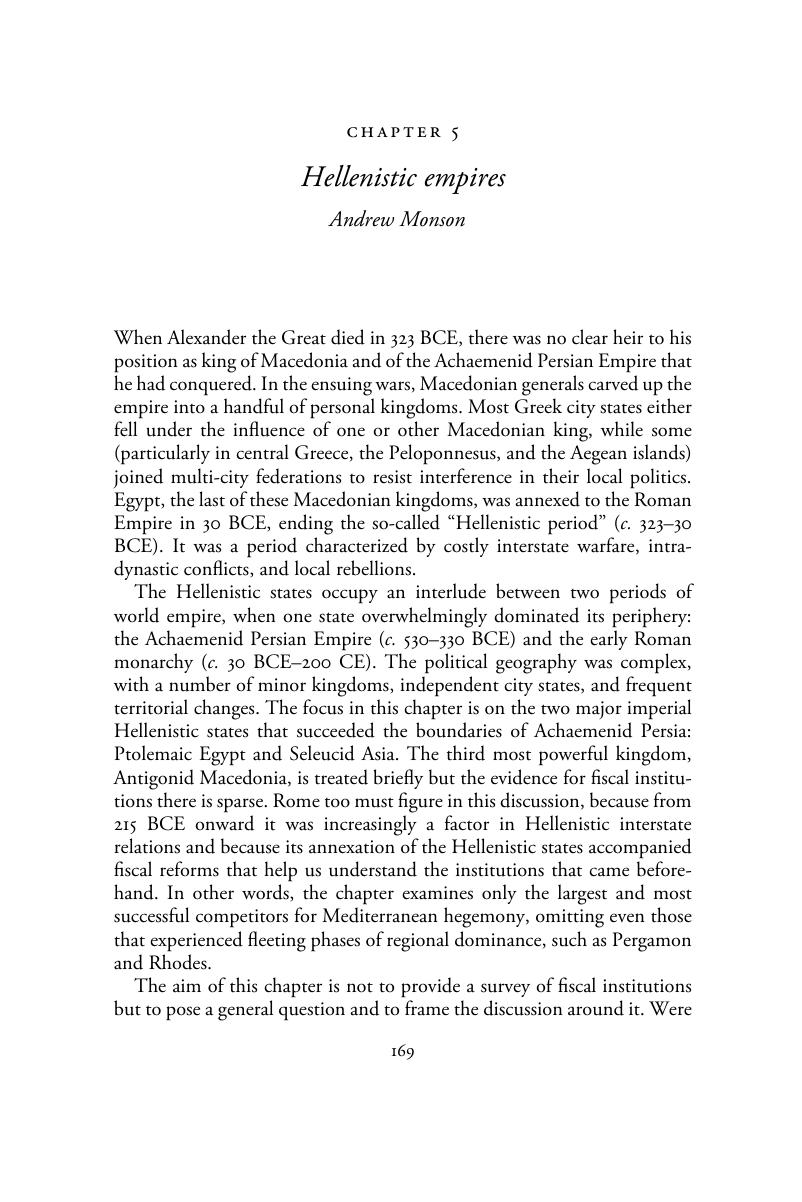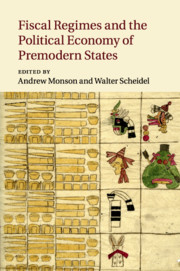Book contents
- Fiscal Regimes and the Political Economy of Premodern States
- Fiscal Regimes and the Political Economy of Premodern States
- Copyright page
- Contents
- Figures
- Tables
- Notes on contributors
- Book part
- Introduction
- Part I Diversity and Commonalities in Early Extraction Regimes
- Part II Determinants of Intensification and Abatement
- Chapter 5 Hellenistic empires
- Chapter 6 The Roman Republic
- Chapter 7 The early Roman monarchy
- Chapter 8 The later Roman Empire
- Chapter 9 Early imperial China, from the Qin and Han through Tang
- Chapter 10 Imperial China under the Song and late Qing
- Part III Divergent Trends among Established Regimes
- Part IV Fragmented Political Ecologies and Institutional Innovation
- Part V Comparative Perspectives and New Frontiers
- Index
- References
Chapter 5 - Hellenistic empires
from Part II - Determinants of Intensification and Abatement
Published online by Cambridge University Press: 05 May 2015
- Fiscal Regimes and the Political Economy of Premodern States
- Fiscal Regimes and the Political Economy of Premodern States
- Copyright page
- Contents
- Figures
- Tables
- Notes on contributors
- Book part
- Introduction
- Part I Diversity and Commonalities in Early Extraction Regimes
- Part II Determinants of Intensification and Abatement
- Chapter 5 Hellenistic empires
- Chapter 6 The Roman Republic
- Chapter 7 The early Roman monarchy
- Chapter 8 The later Roman Empire
- Chapter 9 Early imperial China, from the Qin and Han through Tang
- Chapter 10 Imperial China under the Song and late Qing
- Part III Divergent Trends among Established Regimes
- Part IV Fragmented Political Ecologies and Institutional Innovation
- Part V Comparative Perspectives and New Frontiers
- Index
- References
Summary

- Type
- Chapter
- Information
- Fiscal Regimes and the Political Economy of Premodern States , pp. 169 - 207Publisher: Cambridge University PressPrint publication year: 2015
References
- 13
- Cited by



